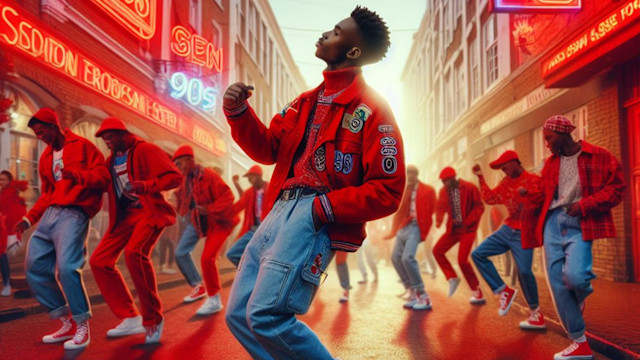The History Behind Amapiano Music and Its Popularity Today
April 18, 2024 - Learn everything you need to know about Amapiano, the new, fast-growing African music genre taking over the charts worldwide

With the fast-changing pace of the internet’s memes and trends, comes the equally volatile genre of music. Music is one of those rare art forms that doesn't require you to understand the language being used but rather the energy being felt.
And there's no better example than genres like Amapiano. Some of you may have been listening to it for a while. The rest of you stumbled or grew up with it just like I did. And some of you are probably wondering why I spelled “piano” wrong.
So let’s dive into the ethereal world of Amapiano’s roots, journey, and its seeming takeover.
Origins of Amapiano
In the 2010s, in the townships of South Africa, emerged a fusion of House, Kwaito, and Jazz sounds rooted in a distinct African House genre. This sound was Amapiano.
The word itself comes from the Native tongue Zulu and means “the pianos”. It’s characterized by its tempo, repetitive piano melodies, and catchy basslines. And although it's a dance-driven genre, producers and DJs don't shy away from vocal-driven hooks and songs.
The city of Pretoria, along with its surrounding areas, are mostly credited with the sound. If South Africa were the face of “Yanos”, Pretoria would be credited as the mouth.
Here, underground artists started experimenting with its innovative sound, bringing us what we call Amapiano.
Although it's hard to pinpoint, artists like Kabza De Small, DJ Maphorisa, and Vigro Deep are widely regarded as some of the creators, first popular Amapiano artists and pioneers of the genre.
The Rise to Global Popularity
Amapiano’s rise to popularity can be attributed to social media platforms such as TikTok and Instagram, especially due to TikTok’s early content which made dance challenges go viral. With the emerging dance-based genre of Amapiano, the sound spread like wildfire. Infectious, uplifting melodies gained incredible momentum, enthralling South Africa, the continent, and then the world.
International producers and artists eventually took notice of the growing popularity of Amapiano. With the never-ending quest to find and create something new, collaborations with South African artists and the incorporation of Amapiano elements became inevitable.
This cross-pollination of musical styles further pushed Amapiano to the forefront, reaching the ears of Western countries and sparking a healthy curiosity about African music.
The Sound of Amapiano
At the heart of Amapiano lies its distinctive sound – the log drum. Although not a necessity to be included in the genre, its unique use unmistakably makes an Amapiano song identifiable.
The genre sounds both nostalgic and contemporary, paying homage to South Africa’s rich musical heritage, while its popularity is bolstered by modern production techniques and global influences.
Many producers not only share their unique take on production online but also showcase the specific sounds they love to use.
Luckily for anyone interested in producing the genre, whether out of curiosity or to bring a fresh sound to their professional career, we're excited to announce that Soundtrap two different Amapiano sample packs in the studio: Amapiano Log Drums and Igazi.
The sample packs offer a curated selection of high-quality sounds, perfect for producers and creators looking to add authentic Amapiano elements to their tracks.
From soulful pianos and groovy basslines to rhythmic percussion and atmospheric synths, our sound packs provide endless creative possibilities. Check them out below.
Amapiano Beyond Music
Beyond the technical aspects that define and elevate the genre, the phenomenon that has evolved into Amapiano has become a cultural shift that transcends music. It has influenced dance and lifestyle trends worldwide.
Alongside other era-defining genres, Amapiano’s community has built an ethos of DIY spirit; a new wave of artists and producers democratizing music production.
Its ability to connect people from vastly different cultural backgrounds and tastes is not only the hallmark of a good genre but an embodiment of what humanity should strive for.
Once again, the language of music brings people together, creating shared experiences in the diverse facets of life.
The Future of Amapiano
As the years go by and trends shift to determine the waves that will make an impact, Amapiano continues to evolve, adapt, and carve out a bright future for itself.
With a growing global fanbase, including a thriving community of artists and producers, and a virtually expanding arsenal of sounds and styles, Amapiano is poised to leave an indelible mark on the world of music for years to come.
Newcomers and experienced producers are constantly pushing the boundaries of what Amapiano can be, and that's both expected and welcomed.
Experimenting with new sounds, collaborating across genres, and elevating the genre to new heights, the momentum of Amapiano shows no signs of slowing down.
With festivals, events, and concerts dedicated to the genre popping up worldwide, we’re all excited to see the next chapter of “The Pianos”.
As we celebrate the past, embrace the present, and look forward to the future of Amapiano, one thing remains clear – its infectious beats, soulful melodies, and feel-good vibes are here to stay.
Whether you're dancing the night away to your favorite Amapiano tracks, exploring new sounds and styles with Soundtrap's Amapiano sound pack, or simply enjoying the genre's cultural impact, let's continue to celebrate and support the music that brings us together and makes us feel alive.
Om skribenten
Anton Berner är en musikproducent, ljudtekniker och låtskrivare från Stockholm, Sverige. Han har producerat hiphop- och rapmusik sedan början av 2000-talet och hans expertis är inom sångmixning och samplingsbaserad beatproduktion. Anton är även SEO & Content Manager @ Soundtrap och sköter bloggen och nyhetsrummet.
Kom igång med Soundtrap idag!